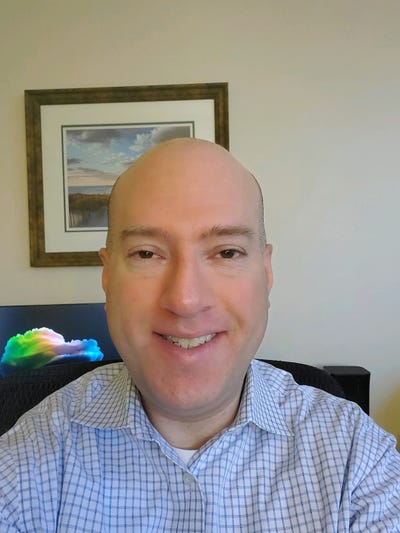How Healthcare and Life Science Companies Are Using GenAIHow Healthcare and Life Science Companies Are Using GenAI
Emily Kruger, chief innovation officer at Loka, discusses how healthcare and life science companies are gaining new efficiencies with generative artificial intelligence, from R&D to clinical drug trials.

Although healthcare is typically slow to adopt new technologies, healthcare and life sciences (HCLS) companies are ramping up adoption of generative AI.
From cancer research labs to the physician’s office, generative AI (GenAI) helps physicians create automated summaries and in drug discovery, GenAI models can interpret genomes as language and identity targets for drug discovery, says Emily Kruger, chief innovation officer at Loka, a consulting partner in areas such as artificial intelligence and machine learning, healthcare analytics and revenue cycle management.
In addition, despite some required safeguards, researchers at Mass General Brigham have discovered that ChatGPT could make the screening process quicker when searching for patients eligible for clinical trials.
At the AWS Summit in NYC earlier this summer, information sat down with Kruger to discuss how healthcare and life sciences companies (HCLS) are using GenAI.
(Editor’s note: This interview has been edited for clarity and brevity.)
How far along are HCLS companies in their generative AI strategies?
I would say that healthcare and life sciences -- it depends on the size and the maturity of [organizations] -- have been a little bit slower traditionally in adopting new technologies, and we haven’t seen that trend as much in generative AI. In fact, I think a lot of our healthcare customers have been at the forefront of adopting these. Companies in regulated spaces maybe have already had better data privacy and data protections in place, so they may be better placed to take advantage of generative AI.
A lot of use cases can benefit from GenAI, particularly where there are large amounts of data, many of it being unstructured, or data that is more difficult to interpret. This ranges from medical insurance records or [electronic medical records] to using LLMs to understand and interpret genomic data and using that in the drug discovery process. There are many ways to unlock value from this data and use LLMs and foundation models more broadly.
You mentioned how healthcare and life sciences might be behind other industries in adopting other technologies, but at the same time they might be a good fit for GenAI because of their focus on privacy and governance. I'm wondering if you can elaborate on that.
A lot of these companies, of course, they’re governed by HIPAA; they're governed by various FDA clearances. As a result, they have had to have a sort of more structured approach to data in many cases. To take advantage of a lot of these technologies, having your data consolidated, well organized, protected in the first place if you're going to be using them with the models is kind of a prerequisite. And so some of that legwork has been done, in addition to the strong ROI that they see from working with the models.
How are companies moving ahead in GenAI as far as drug discovery and clinical drug trials?
In the R&D space, scientists extract data from research papers or look for summaries and trends across combinations of third-party data -- for instance, maybe something from PubMed, and also data that’s internal to their organizations.
It becomes relatively expensive to query data that exists in PubMed, but if you’re looking at a narrower space for drug discovery, it can be really powerful. That combination of third-party data and internal data unlocks a lot of benefits for those companies, so time that would have been spent trying to find that data before you're actually doing the scientific work.
.jpg?width=700&auto=webp&quality=80&disable=upscale)
Emily Kruger, Loka
And in the target identification space, we’ve been doing a lot of work with companies that are exploring protein and DNA LLMs. They’ve been trained on human and primate genomes essentially. The models are basically interpreting genomes as language, and can identify targets for drug discovery, and really narrow down that space. In a traditional sense, a scientist might come up with a hypothesis based on their experience that may be thousands of potential targets, and each one of those may cost hundreds of thousands of dollars to run. Instead, you can narrow that down to a much smaller amount of qualified targets with the LLMs, and therefore, you can speed up the drug discovery process.
We’ve been working with companies in the cancer space, so retraining models on entire cancer genomes with their own internal data. We’ve seen it also in the agritech life sciences space, and not drug discovery specific but in improving outcomes for development of new seeds.
In clinical trials and drug discovery, how are organizations using generative AI to manage unstructured data and make sense of data when it is in all different formats?
A scientific helper is a very common use case we see in life sciences, especially in the R&D space. On the clinical side we’re seeing a lot of momentum in clinical trial matching. So being able to parse requirements for clinical trials and match them to characteristics of potential individuals who could be used in those trials. These are large amounts of unstructured data, maybe in different formats, PDFs, or Excel. You need to be able to consolidate, parse, and then compare to create a population that could be used in a clinical trial setting.
When scientists and doctors are not software developers and they want to create apps to help with clinical trials or drug discovery, how are they going to use big data and AI on a day-to-day basis?
Scientists that are more in the analytics space -- for instance, bioinformaticians or chemists -- they’re doing analytical work on data, but they may not understand or be able to easily, for instance, spin up VC2 instances, or think through the technical structure to build those applications. GenAI, particularly with the ability to create new applications on the fly or create insights from data, can leapfrog the necessity to build an abstraction layer for the scientists and allow them to do that more on their own.
What’s the outlook for AI use in clinical trials and drug discovery?
I’m bullish about the potential to discover cures for diseases much more quickly as a result of generative AI, but also improvements in the healthcare space as well.
I think there’s a lot of promise connected to clinical trials. We have customers that work in gathering and interpreting imaging data, medical imaging data from clinical trials, and then being able to provide that metadata back to their customers. I think the ability to interpret those images, and also potentially correct those images in ways that were not part of the protocol as well as the ability to generate new cloud images and to train traditional models more efficiently, are all areas of promise, [as is] the medical imaging space.
What should other CIOs take away from what healthcare and life science companies are doing when it comes to generative AI?
What health and life sciences companies are doing very well in successful implementations is identifying uses of generative AI that are ROI-positive for them. They are high-value use cases like replacing very manual tasks humans were doing, or if it was error-prone.
Think through the use-case selection from the very beginning, and make sure you’re not just doing something to say you’re using GenAI inside of your organization, but that you’re trying to think strategically about how it’s advancing. [Consider] the mission of your company, either from an IP perspective, or creating greater efficiencies, so that you can do your core work better, is one key area. The other is really thinking through the data security and data access, and so I think that is something that healthcare and life sciences companies are thinking through because they’re regulated industries from the beginning.
About the Author
You May Also Like






